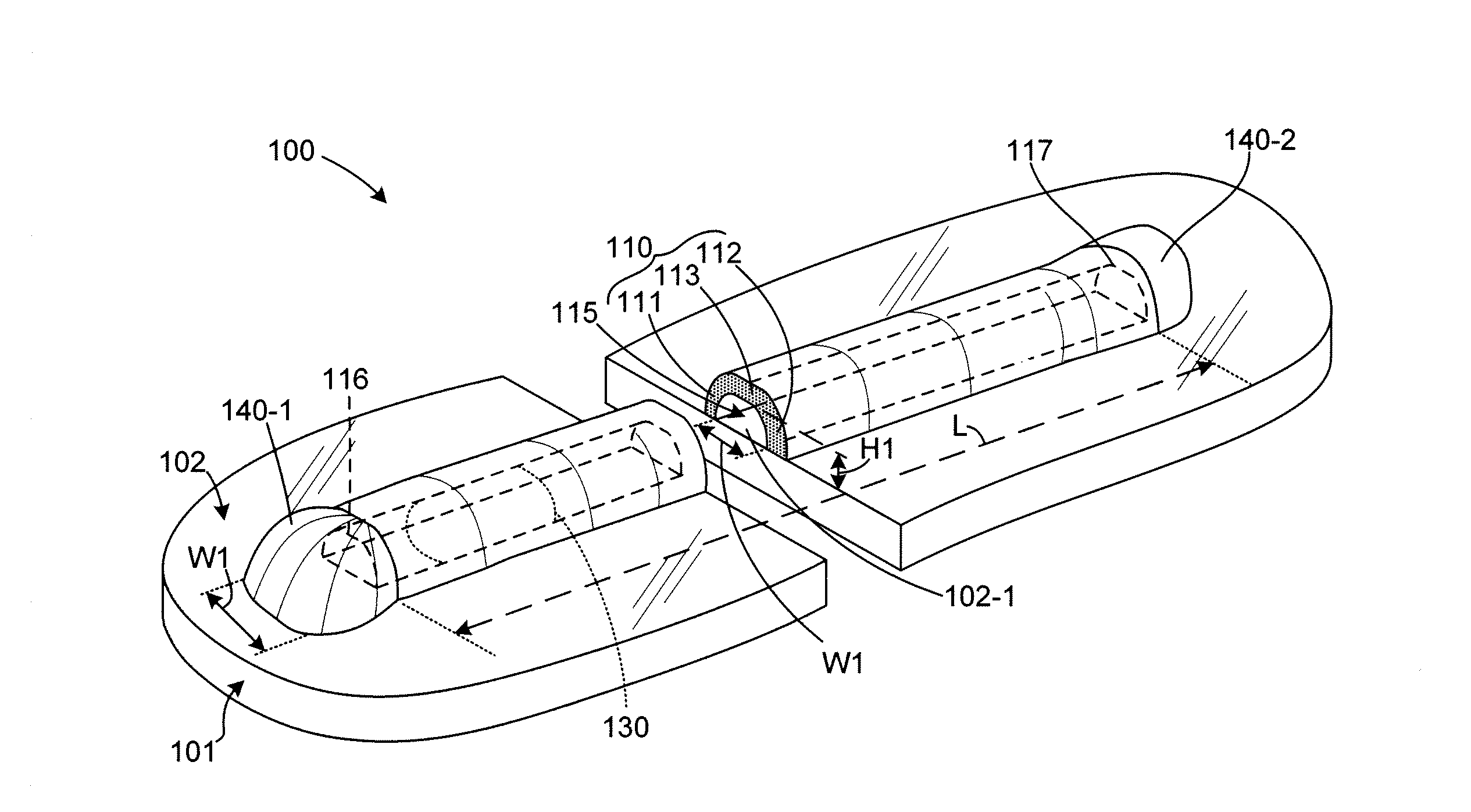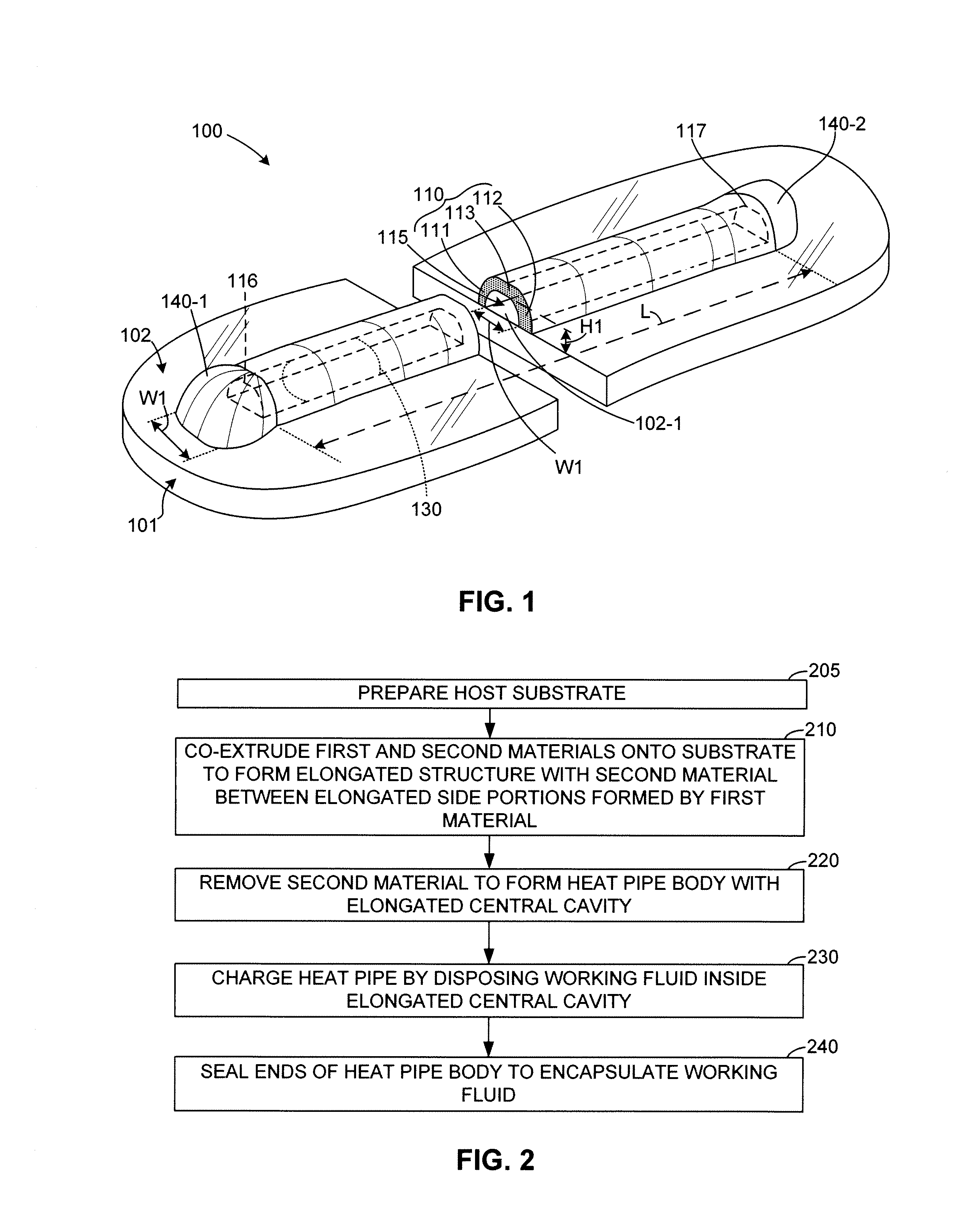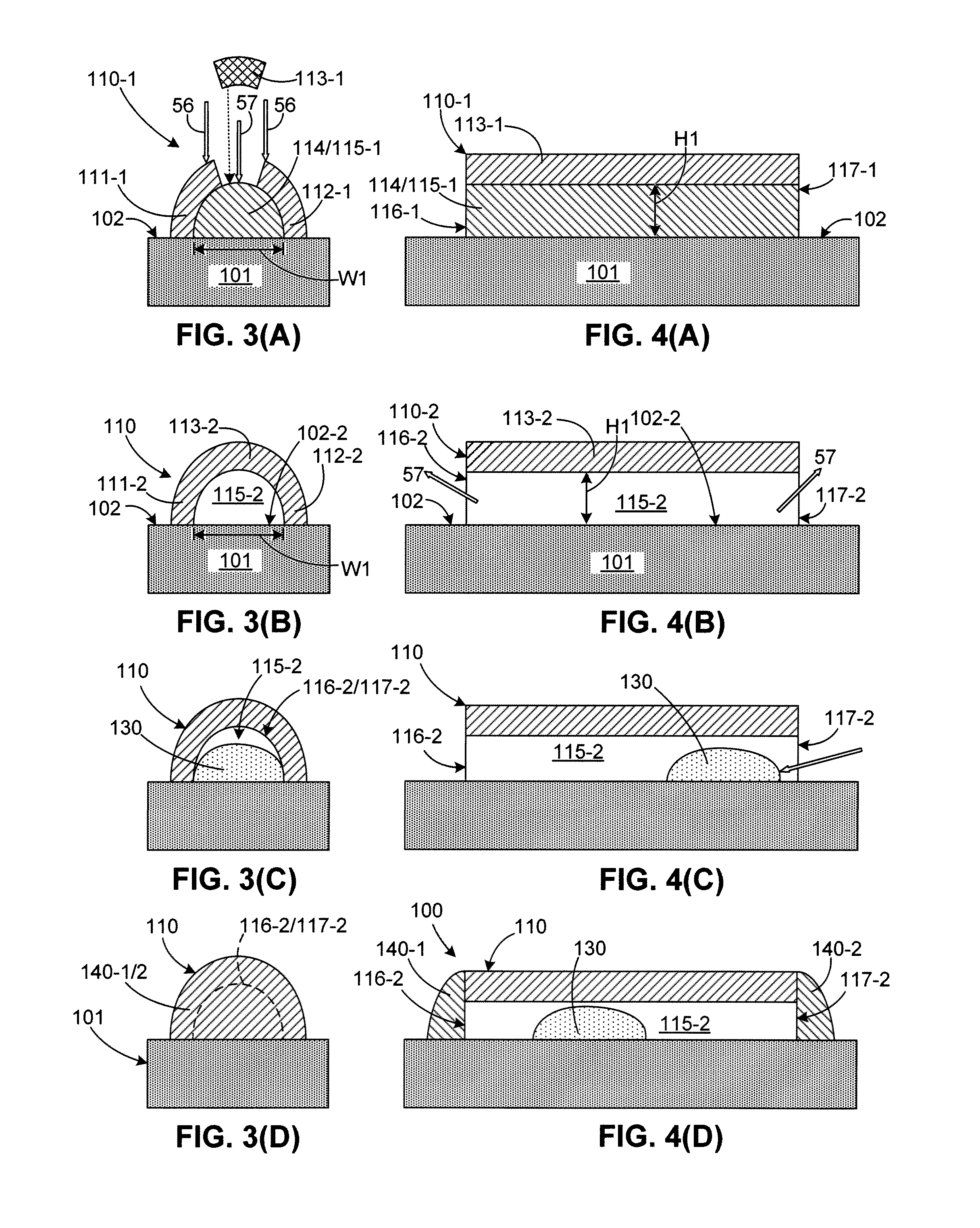Co-Extruded Microchannel Heat Pipes
- Summary
- Abstract
- Description
- Claims
- Application Information
AI Technical Summary
Benefits of technology
Problems solved by technology
Method used
Image
Examples
Example
[0066]FIGS. 10(A) to 10(C) depict a first specific embodiment involving a two-part process that is utilized to produce elongated composite structures. FIG. 10(A) depicts a first part of the two-part process, and involves co-extruding a primary material 56A-1 and a secondary material 57A in the manner described above to produce a preliminary composite structure including side structures 111A-1 and 112A-1 and a central bead 114A disposed therebetween. Note that the preliminary composite structure shown in FIG. 10(A) is formed such that an upper surface of central bead 114A is exposed (i.e., not covered by primary material). FIG. 10(B) depicts composite structure 110A-1 after a second part of the two-part process in which a third material 56A-2 (which is either identical to primary material 56A-1 or suitably compatible) is extruded or printed onto the preliminary composite structure, whereby the third material forms an elongated upper portion 113A-1 that extends between upper edges of ...
Example
[0067]FIGS. 11(A) and 11(B) depict a second specific embodiment in which the co-extrusion process is performed using a modified co-extrusion printhead including a fourth nozzle inlet to the material merge point such that primary material 56B is simultaneously extruded onto the upper surface of secondary material 57B, which forms central bead 114B, whereby side portions 111B-1 and 112B-1 and an upper portion 113B-1 are formed during a single co-extrusion pass. Suitable printhead modifications capable of generating such vertical layering are described, for example, in co-owned U.S. Pat. No. 7,765,949, which is incorporated herein by reference in its entirety. FIG. 11(A) depicts composite structure 110B-1 formed by this method immediately after the co-extrusion process, and FIG. 11(B) depicts a resulting pipe structure 110B-2 after subsequent curing / hardening of the primary material to form side walls 111B-2 and 112B-2 and an upper wall 113B-2, and the removal of the secondary material...
Example
[0068]FIGS. 12(A) to 12(C) depict a third specific embodiment involving polymerization of a portion of the co-extruded primary and secondary materials to form a polymer structure that serves as the desired rigid pipe body. FIG. 12(A) depicts the co-extrusion of a primary material 56C and a secondary material 57C using any of the techniques described above to produce a preliminary composite structure 110C-1 including side portions 111C-1 and 112C-1, a central bead 114C disposed therebetween, and an upper portion 113C-1 that extends over central bead 114C. In this embodiment primary material 56C includes both a catalyst and a monomer, and FIG. 12(B) depicts a subsequent polymerization process that causes at least a portions of the primary material forming side portions 111C-1 and 112C-1 and upper portion 113C-1 to generate a polymer structure (pipe body) 110C-2 that surrounds central bead 114C. In one specific embodiment the catalyst comprises an ultraviolet (UV) reactive material, an...
PUM
| Property | Measurement | Unit |
|---|---|---|
| Length | aaaaa | aaaaa |
| Length | aaaaa | aaaaa |
| Length | aaaaa | aaaaa |
Abstract
Description
Claims
Application Information
 Login to View More
Login to View More - R&D
- Intellectual Property
- Life Sciences
- Materials
- Tech Scout
- Unparalleled Data Quality
- Higher Quality Content
- 60% Fewer Hallucinations
Browse by: Latest US Patents, China's latest patents, Technical Efficacy Thesaurus, Application Domain, Technology Topic, Popular Technical Reports.
© 2025 PatSnap. All rights reserved.Legal|Privacy policy|Modern Slavery Act Transparency Statement|Sitemap|About US| Contact US: help@patsnap.com



